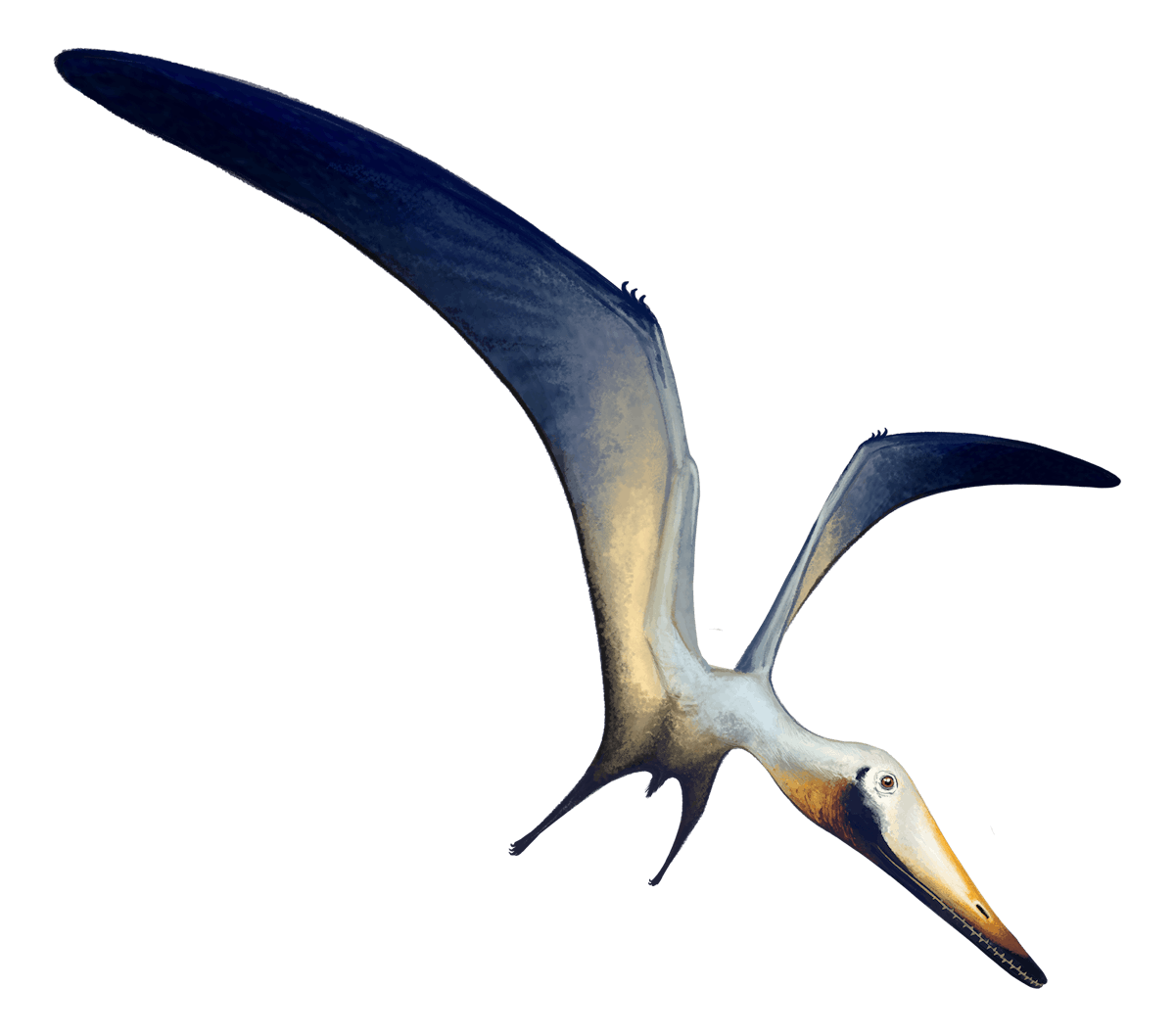Hongshanopterus



Hongshanopterus lacustris is known from a single specimen found in Lower Cretaceous rocks of the Jiufotang Formation of Liaoning, China. It was named in 2008 by Xiaolin Wang and colleagues in 2008, and is named for the ancient Hongshan Culture whose people lived in Liaoning more than 5,000 years ago.
The specimen is made up of a skull without its lower jaw and the first five vertebrae of the neck preserved on a shale block. The skull measures 24 cm (9.5 inches) long and is only visible in palatal view, and has a long rounded V-shaped outline. There are at least 17 pairs of teeth in the upper jaws, evenly spaced in the rostral half of the snout. They’re all rather short, laterally compressed and recurved. Based on the size of the skull, Hongshanopterus probably had a wingspan of 1.8-1.9 m (6 ft).
Wang and colleagues considered Hongshanopterus to be the most primitive member of the Istiodactylidae because it had a larger number of teeth and longer toothrow than all other members of the family. Istiodactylids had skulls that looked superficially duck-like, but unlike ducks, they were terrestrial carnivores.
The istiodactylids are part of a larger lineage of short-tailed pterosaurs called the ornithocheiroids. This group is largely made up of narrow-winged aerial fishers including the toothed ornithocheirids and toothless pteranodontids and nyctosaurids.
Hongshanopterus lived in the same ecosystem as several other istiodactylids including Nurhachius ignaciobritoi, Istiodactylus sinensis, Liaoxipterus brachyognathus, and Longchengpterus zhaoi, as we all as many other pterosaur species. This diverse assemblage of pterosaurs lived in an ancient temperate forest alongside numerous dinosaurs.
1.8-1.9 m (6 ft)



